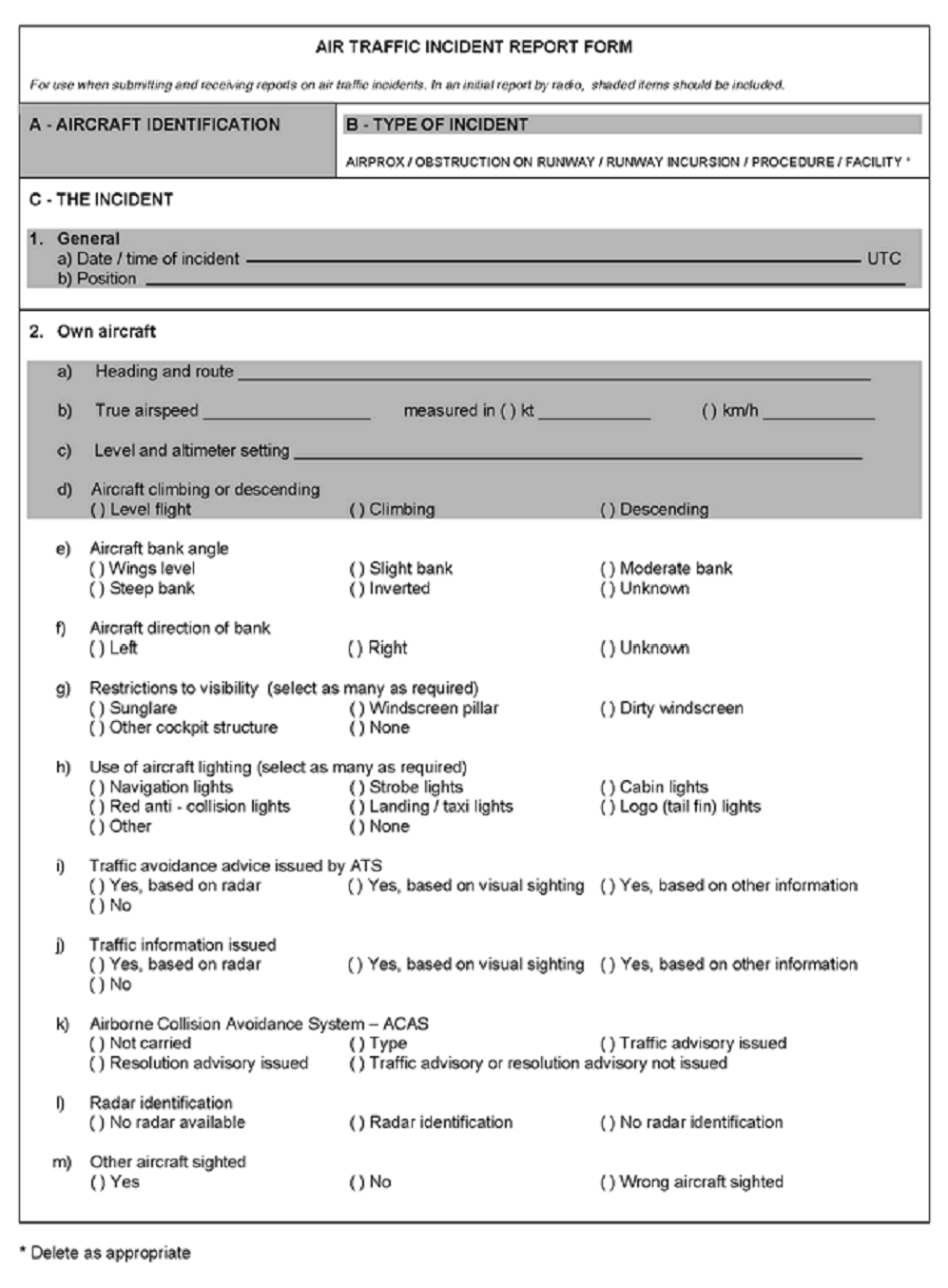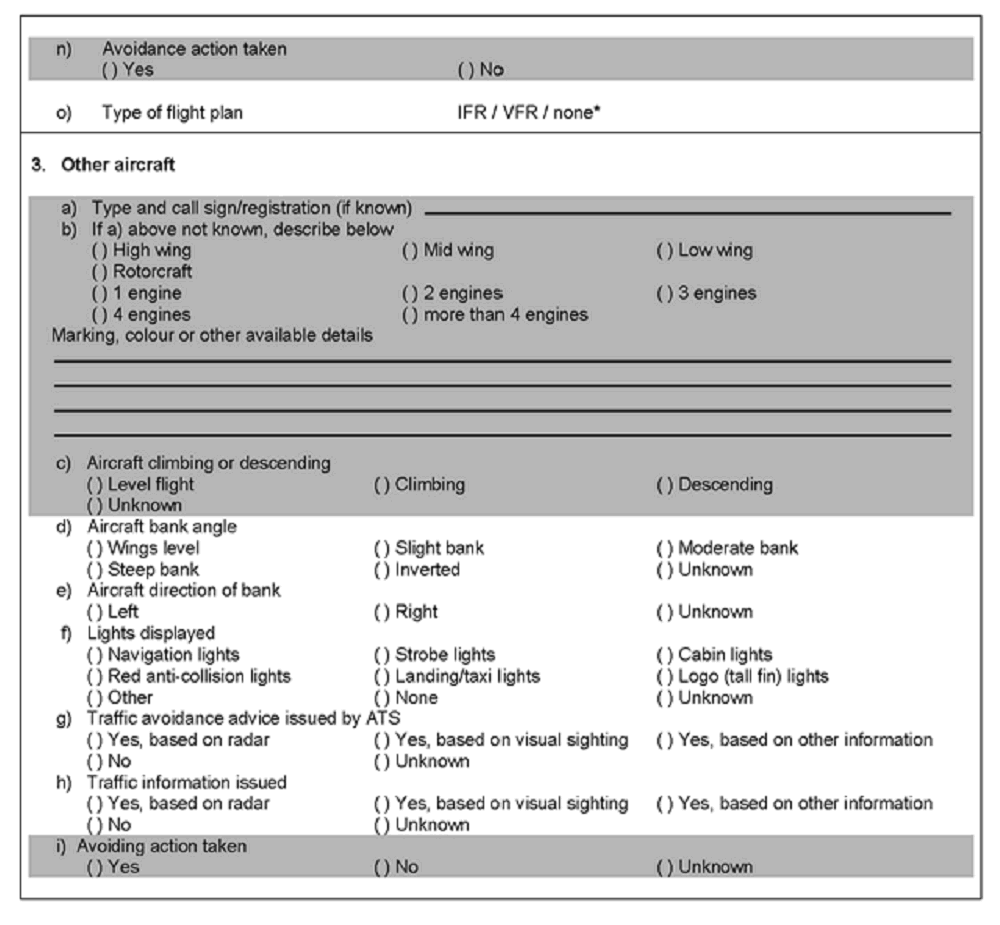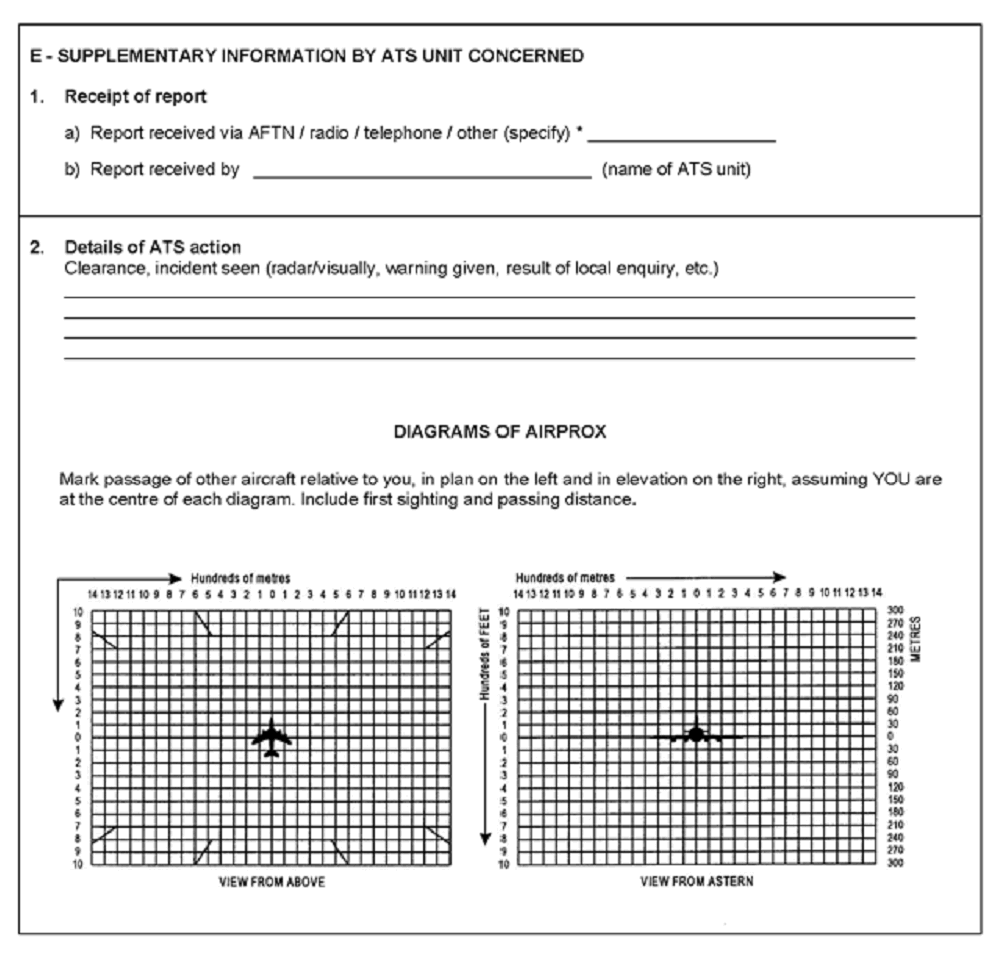ENR 1.14 AIR TRAFFIC INCIDENTS
1. REPORTING OF AIR TRAFFIC INCIDENTS
1.1 Objectives
1.2 General
It is imperative that accurate and complete information regarding an incident be received by the unit or persons involved as soon as possible after the incident actually occurs. Such information is required before effective investigation and corrective action can begin.
1.3 Procedures
The following procedures are to be utilized by ATS units or User Groups when reporting an Air Traffic Incident or unsatisfactory operation condition that occurs within Bangkok FIR.
The air traffic controller involved in an incident/situation will advise the pilot/ controller concerned that an incident report is being filed, report it to the unit watch supervisor and, when operational duties permit, enter the facts in the daily log and complete a copy of the Air Traffic Incident Report Form.
ATC management personnel will, as soon as possible, conduct an investigation of the incident and forward their findings, documentation and recommendations for corrective action to the office of the Director General, CAAT, Bangkok, with a copy to the ATS units or User Groups concerned.
Whenever a pilot-in command considers that his aircraft may have been endangered by the proximity of another aircraft during flight within Bangkok FIR to the extent that a definite risk of collision existed, be should make an AIR TRAFFIC INCIDENT REPORT in accordance with the following procedures.
The initial report of the incident should be made by radio to the ATS unit with which the aircraft is in communication at the time.
The initial report must be prefixed with the word NEAR COLLISION and should be in the following form:
A – Aircraft Identification
B – Type of Incident
C – The Incident
D – Miscellaneous
E – Supplementary Information by ATS Unit concerned.
If it is impossible to report the incident by radio, a report should be made by telephone or other means to any ATS unit immediately after landing.
Any report made by radio or telephone must be confirmed WITHIN SEVEN DAYS on Air Traffic Incident Report Form (see ENR 1.14-5 to 1.14-9).
In the absence of exceptional circumstances, official action on radio or telephone reports will cease after seven days unless the confirmatory report has been received.
Pilot should co-operate by ensuring that the fullest possible information is given in every cast, and by reporting only those incidents that can reasonably be considered to warrant investigation. Some operational ATC records are not retained for longer than thirty days and operators concerned are asked to facilitate action on reports by prompt handling in strict accordance with the procedures described.
1.4 The Civil Aviation Authority of Thailand
2. REPORTING OF AIR TRAFFIC INCIDENTS BY PILOTS AND HANDLING OF REPORTS BY ATS
2.1 The air traffic incident
near collision,
serious difficulty caused by:
faulty procedures or lack of compliance with applicable procedures; or
failure of ground facilities.
| TYPE | DESIGNATION |
|---|---|
| Air traffic incident | INCIDENT |
| as (a) above | - " - : NEAR COLLISION |
| as (b) (i) above | - " - : PROCEDURAL |
| as (b) (ii) above | - " - : FACILITY |
2.2 Use of the "Air Traffic Incident Report Form"
by a pilot for filing a report on an air traffic incident after arrival or to confirm a report made initially by radio during flight:
Note: The form, if available on board, may also be of use in providing a pattern for making the initial report in flight.
by an ATS Unit for recording an air traffic incident report received by radio, telephone or teleprinter.
Note: The form may be used as format for the text of a message to be transmitted over the AFTN network.
2.3 Recording of air traffic incidents by pilots
during flight, use the appropriate air/ground frequency for reporting an incident of major significance, particularly if it involves other aircraft, so as to permit the facts to be ascertained immediately; and
as promptly as possible after landing, submit a completed “Air Traffic Incident Report Form”:
to confirm a report of an incident made initially as in (a) above, or for making the initial report on such an incident if it had not been possible to report it by radio; and
to report an incident which did not require immediate notification at the time of occurrence.
A - Aircraft identification
B - Type of incident, e.g. aircraft proximity
C - The incident
General:
Date/time of incident; and
Position.
Own aircraft:
Heading and routes;
True airspeed;
Level and altimeter setting;
Aircraft climbing or descending; and
Avoiding action taken.
Other aircraft:
Type and call sign/registration;
Other information, if item a) is unknown;
Aircraft climbing or descending;
Avoiding action taken
Distance
Closest horizontal distance; and
Closest vertical distance.
Miscellaneous:
Aerodrome of first landing...............destination...............
Note: Where there is no ATS Reporting Office, the report may be submitted to another ATS unit.
2.4 Handling of Air Traffic Incident Report Form

.

.

.

Instructions for the completion of the air traffic incident report form
| Item | |
|---|---|
| A | Aircraft identification of the aircraft filing the report. |
| B | An AIRPROX report should be filed immediately by radio. |
| C1 | Date/time in UTC and position in bearing and distance from a navigation aid or in latitude/longitude. |
| C2 | Information regarding aircraft filing the report, tick as necessary. |
| C2 c) | E.g. FL 350/1 013 hPa or 2 500 ft/QNH 1 007 hPa or 1 200 ft/QFE 998 hPa. |
| C3 | Information regarding the other aircraft involved. |
| C4 | Passing distance, state units used. |
| C6 | Attach additional papers as required. The diagrams may be used to show positions of aircraft. |
| D1 f) | State name of ATS unit and date/time in UTC. |
| D1 g) | Date and time in UTC. |
| E2 | Include details of ATS unit such as service provided, radiotelephony frequency, SSR Codes assigned and altimeter setting. Use diagram to show the position of aircraft and attach additional papers as required. |